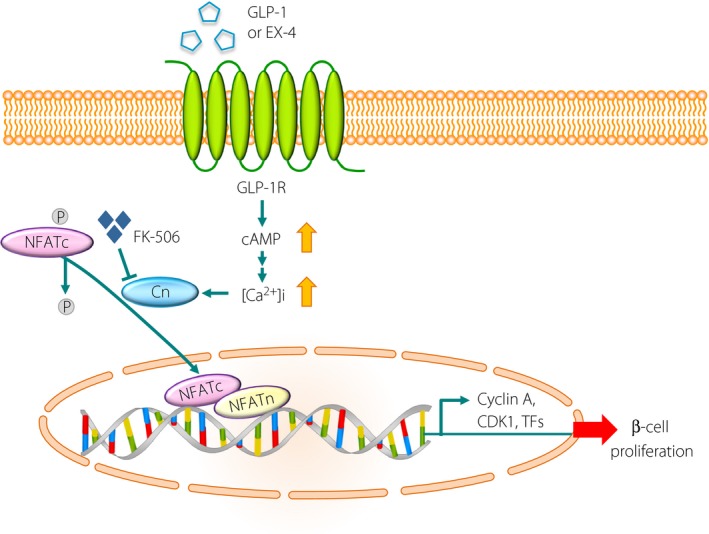Figure 1.

Model of glucagon‐like peptide‐1 (GLP‐1) receptor‐induced mitogenesis of juvenile human β‐cells through the calcineurin/nuclear factor of activated T cells (NFAT) pathway. Binding of GLP‐1 (or exendin‐4 [Ex‐4]) to the GLP‐1 receptor (GLP‐1R) increases intracellular calcium concentrations through cyclic adenosine monophosphate (cAMP) production. An increase in intracellular calcium concentration potentiates calcineurin (Cn), a calcium‐sensitive phosphatase. Activated Cn dephosphorylates the cytoplasmic component of NFAT (NFATc), which triggers its rapid entry into the nucleus. In the nucleus, NFATc proteins assemble on deoxyribonucleic acid with partner proteins termed NFATn, thereby activating target genes, including cell cycle activators (cyclin A and CDK1) and proliferation‐activating transcription factors (TFs), such as Forkhead box protein M1, which are all produced at low levels in adult islets. FK‐506, a well‐known inhibitor of calcineurin, inhibits β‐cell proliferation and thus might predispose individuals to diabetes. CDK, cyclin dependent kinase; P, phosphorylation.
